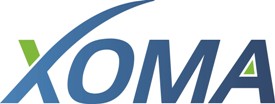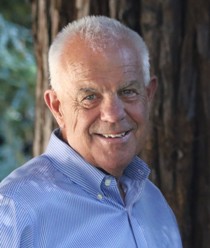
© CEOCFO Magazine -
CEOCFO Magazine, PO Box 340
Palm Harbor, FL 34682-
Phone: 727-
Email: info@ceocfocontact.com


Search





Business Services | Solutions
Medical | Biotech
Cannabis | Hemp
Banking | FinTech | Capital
Government Services
Public Companies
Industrial | Resources
Clean Tech
Global | Canadian
Lynn Fosse, Senior Editor
Steve Alexander, Associate Editor
Bud Wayne, Marketing
& Production Manager
Christy Rivers -







 -
-
XOMA’s Royalty and Milestone Aggregator Business Model Begins to Deliver Value.
 James R. Neal
James R. Neal
Chief Executive Officer and
Chairman
XOMA Corporation (Nasdaq: XOMA)
Interview conducted by:
Bud Wayne, Editorial Executive
CEOCFO Magazine
Published – May 16, 2022
CEOCFO: Mr. Neal, we last spoke with you in November 2020, in the midst of the COVID-
Mr. Neal: It is great to be talking with you again, Bud. We had a busy and successful 2021. There are two drivers of value creation in our biotech royalty aggregator business model: 1) deploying capital to add assets to XOMA’s portfolio, and 2) the investments made by the partners to advance the assets. As the assets achieve clinical milestones, we see potential financial milestones and ultimately, royalties when the biotech asset is commercialized. In our business, an asset is the right to receive the potential future economics – the milestone and royalty payments negotiated between a biotech company and a well-
In 2021, we completed some meaningful transactions where we deployed $25 million worth of capital to add assets to XOMA’s potential milestone and royalty portfolio, which builds value in our Company. At the end of December 2020 and in 2021, we strengthened our balance sheet, which in business is always important, but in this business particularly so, by eliminating all outstanding debt and raising more than $60 million of cash from two perpetual preferred equity offerings. The team has been busy!
We experienced the underlying drumbeat of the activities that result from the investments made by our partners. We saw several assets achieve significant clinical advancements. For example, the TGF-
CEOCFO: What goes into XOMA’s decision making process as it looks at royalty license opportunities? Is it a team effort? Who does the evaluation and what is your role in the process?
Mr. Neal: I will answer that in reverse order. My role is that of the gatekeeper; it is important for me to feel the transactions are appropriate and meet the strategic direction that we have outlined. The process is very much a team effort; we have a great team who have proven capable of identifying, structuring, and creating the win/win transactions that work best for both parties.
When we think about opportunities and how we decide which economics we would like to acquire, the most important factor is the presence of an established license agreement that outlines the economic terms associated with the advancement of the clinical program. That is what we look to monetize. The second factor is the underlying drug candidate must fit the target profile that we look for. In our differentiated world as a royalty company, that means a Phase 1 or Phase 2 compound with substantial commercial sales potential in the hands of a well-
CEOCFO: On your website it says in big bold print, “With 70+ Assets and Growing.” What is the significance of this? Are you the only royalty aggregator that has reached such a level? With such an accomplishment, how much better can it get?
Mr. Neal: We have 70 plus assets, assets being this opportunity to receive potential future milestone and royalty payments. That is more than double from where we started in 2017. Seventy is significant because we are using a portfolio strategy to mitigate risk. We know drug development is a risky business, so adding assets to the portfolio has both a risk-
Can it get better? Yes. We created and own a specific niche in the biotech royalty aggregator space – monetizing economic licenses associated with potential therapeutic assets in Phase 2 and Phase 1 development. There are a lot of companies out there holding licenses, and at some point, they are going to need to raise capital to fund their own drug development activities. We want them to know XOMA may have a solution for them and will work with them fairly.
CEOCFO: In January of this year, 2022, the first asset under XOMA’s royalty aggregator business model received approval from the FDA -
Mr. Neal: Absolutely! The addition of Roche’s faricimab from Affitech SA was a nice proof-
Some of the assets in our portfolio that sit right behind faricimab may be a little bit later in time, but perhaps could have a bigger revenue impact for XOMA.
CEOCFO: 2021 was an exciting year for XOMA, with your announcement back in October of 2021 of the acquisition of economics associated with Roche’s faricimab from Affitech. Beyond this asset, what other acquisitions from 2021 would you highlight?
Mr. Neal: The faricimab transaction was quite important as we’ve discussed, yet it was just one asset amongst the set of assets acquired by the $25 million the team deployed to grow XOMA’s portfolio. A couple of examples of exciting molecules that I would highlight are DAY101, which is a really interesting potential registrational program being advanced by Day One for pediatric low-
DAY101 is being studied in an orphan indication that is a really rough pediatric diagnosis. Therefore, it is possible that this study could become a registrational study. If that is the case and the study is successful, this program could bring benefit to patients quickly, and it could bring economics to us relatively quickly as well. It was a nice add-
Another one that is important from our perspective is Checkmate Pharmaceuticals who is advancing vidutolimod in melanoma indications. It represents another example of our global reach, as we identified the opportunity from Kuros Biosciences, a Swiss firm. Vidutolimod is an interesting oncology asset that has some upside potential, and it could be significant for patients and for us as we think of the advancement of molecules in the immune-
CEOCFO: XOMA’s full year 2021 financial results were released March 8, 2022. Would you tell us about some of your milestone payments and other highlights?
Mr. Neal: In our view, the milestone payments are an underappreciated element of our business model. I think the events we saw in 2021 continued to highlight the importance of milestones as valuable non-
The best example was the milestone payment we received from Novartis in Q4 2021. It is a perfect example of the significant slug of cash, $35 million in this case, that is possible when a program enters into the Phase 3 development phase. Not all of the assets in our portfolio have milestones of this size. Yet, we expect there will be a period of time when significantly more programs will be at that Phase 3 and regulatory approval stage than XOMA’s portfolio today, and that is when things get really exciting from a business model perspective.
When you couple 2021’s milestones with our very low-
CEOCFO: In December of 2021, you announced your plans for retirement from the CEO role and succession plans, as well as the search for a new CEO. I know that must have been a tough decision for you. Why is now the right time and how has the search been going?
Mr. Neal: It was a difficult decision. I see the huge upside potential at XOMA. Also from a personal perspective, I think COVID helped me understand what matters in life, and yes, it is success in business, but it is success with family and interacting with those around you who you care about. For me, we had three grand babies born in the COVID era, and those are reminders of these windows that you have on those little folks’ lives and being able to spend time with them. It is challenging to do that and run a company, so I made the difficult decision to move on to this next phase.
At the same time, the state of the business is in this great place. We have gone from basically being out of business, almost bankrupt and loaded up with debt, to a well-
As for the search, we have the luxury of time, and we have been very transparent about how we are going to go through this change in leadership. We are looking for the very best person to fill this role, so we are going to be careful about the process we engage in. I am not going anywhere. I care a lot about this company, and I hold a significant stock position, which has always been important for us to have management aligned with shareholders. I care about what happens with XOMA, and I care about the team. As Chair, I’ll help mentor the next CEO, and I am going to be overseeing much of the Company’s activities on an ongoing basis.
CEOCFO: What should shareholders and potential investors look for in the coming year from XOMA. What will your new role as Chairman look like and will the strategy that you have set in place as CEO remain the same for the new CEO?
Mr. Neal: On the transaction side I would say more of the same – adding the economic rights associated with Phase 2 and Phase 1 partner-
The strategy is very clear and arguably simple. We deploy capital to acquire and hold these potential economic assets, allow them to mature in the hands of the partners and keep our low-
As assets mature the milestone rewards get bigger and bigger. We look for assets to continue to move forward at no cost to us and in the hands of the development partners, and we see more and more of those assets entering late-
EXPLANATORY NOTE: Any references to “portfolio” in this article refer strictly to milestone and/or royalty rights associated with a basket of drug products in development. Any references to “assets” in this article refer strictly to milestone and/or royalty rights associated with individual drug products in development. References to royalties or royalty rates strictly refer to future potential payment streams regardless of whether or not they are technically defined as royalties in the underlying contractual agreement; further, any rates referenced herein are subject to potential future contractual adjustments.
As of the date of this article, all assets in XOMA’s milestone and royalty portfolio, except faricimab, are investigational compounds. Efficacy and safety have not been established. There is no guarantee that any of the investigational compounds will become commercially available.
XOMA Corporation | James R. Neal | Biotech Royalty Aggregators | Nasdaq: XOMA, XOMA’s Royalty and Milestone Aggregator Business Model Begins to Deliver Value | CEO Interviews 2022 | Drug Development Stock | Drug Discovery Companies | Public Companies | biotech products for out-
“We experienced the underlying drumbeat of the activities that result from the investments made by our partners, as several assets achieved significant clinical advancements. We invested $25 million to grow our potential royalty and milestone portfolio. With two Phase 3 assets and a commercial asset in the portfolio, we believe our value is very different than what it was in November 2020.” James R. Neal